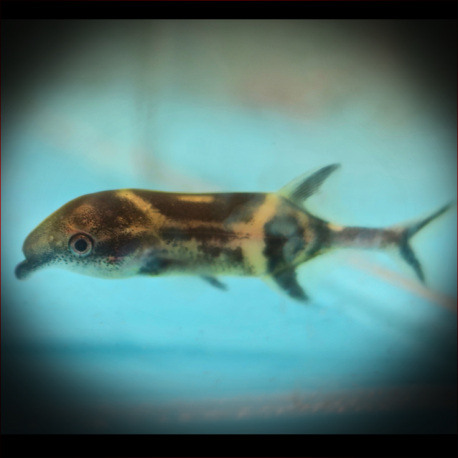More info
Datasheet
| Minimum Tank Size | 650 litres / 171.71 US gallons |
| Maximum Size | 40.0cm / 15.75inches |
| Temperature | 23°C / 73.40°F - 28°C / 82.40°F |
| Hardness | 0-10ºdH |
| pH | 5.0-7.0 |
General Description
C. tamandua, commonly known as the Worm-Jawed Mormyrid, presents a distinct appearance with extended upper and lower jaws, resembling a beak. This species produces a weak electric field and possesses electroreceptors to navigate, communicate, and sense its surroundings in darkness. With a maximum size of 40.0cm, it requires specific water conditions and is sensitive to aquarium medications.
Aquarium Setup
For optimal care, a tank of at least 650 litres with dim lighting, floating plants, rocks, roots, and sand substrate is recommended for C. tamandua. Maintaining a pH of 5.0-7.0, hardness of 0-10 dH, and temperature between 23-28°C is crucial. Filtration over peat and creating water flow mimics its natural habitat.
Behaviour
C. tamandua is not sociable with other Mormyrids and should be kept as a single specimen. It can coexist with larger Synodontis catfish and peaceful cichlids but not with fast-swimming fish that may outcompete it for food. This species utilizes its electric field for communication, prey hunting, and predator avoidance, showcasing its impressive adaptation skills.
Feeding and Diet
The Worm-Jawed Mormyrid feeds on frozen and live foods like bloodworms, brine shrimp, and earthworms. It rarely accepts dried foods, emphasizing the need for a varied diet in captivity. Providing suitable live or frozen options is crucial for meeting its nutritional requirements.
Reproduction & Dimorphism
There is limited information on the reproductive behavior of C. tamandua in aquarium settings, indicating challenges in breeding this species in captivity. Sexual dimorphism remains unknown, emphasizing the need for further research to understand their breeding habits and characteristics.
Habitat and Distribution
Naturally found in dark, muddy, and vegetated river regions across countries such as Cameroon, Nigeria, and Ghana, C. tamandua thrives as a benthic species. Its wide distribution includes regions in the Democratic Republic of Congo, Chad, Benin, Mali, Burkina Faso, and Niger, highlighting its adaptability to various environments.

